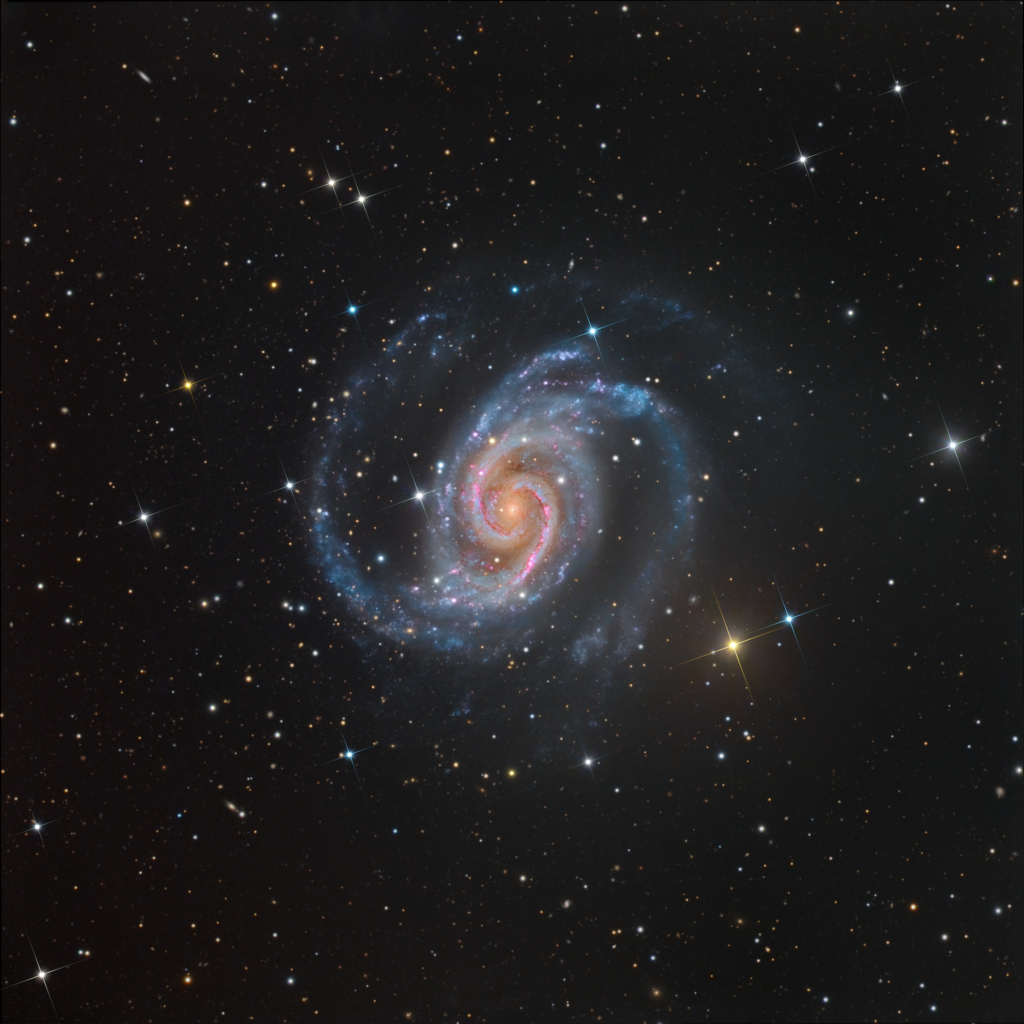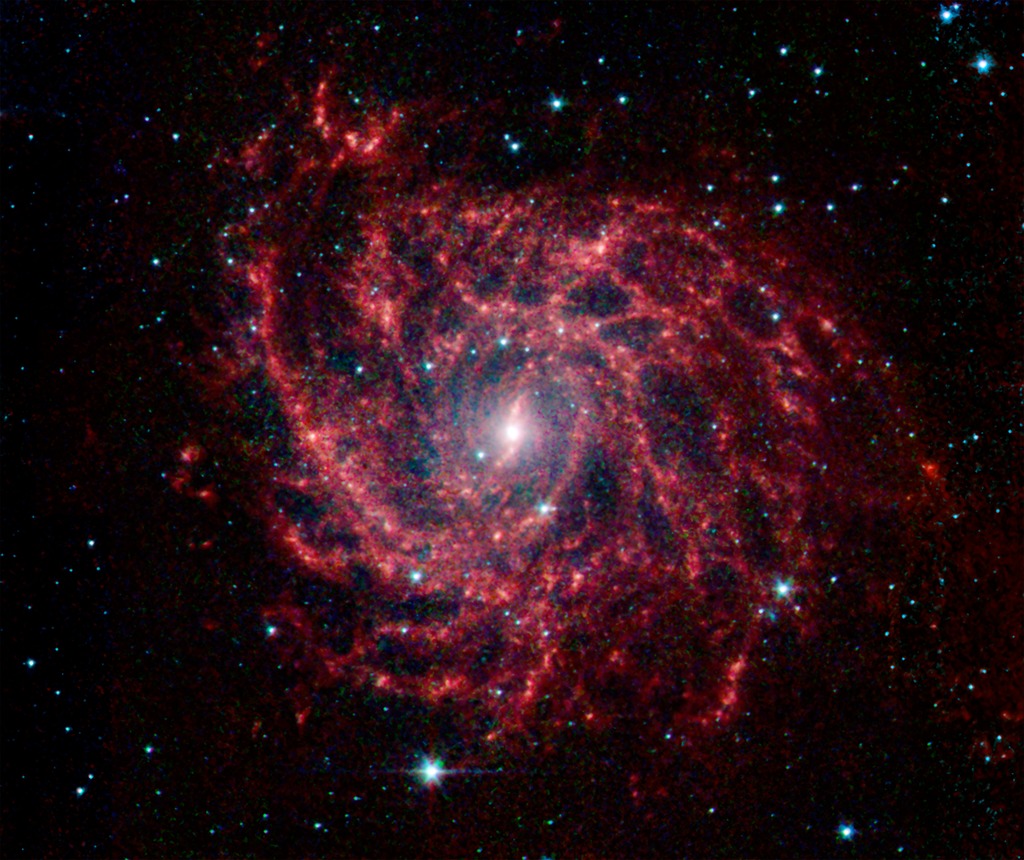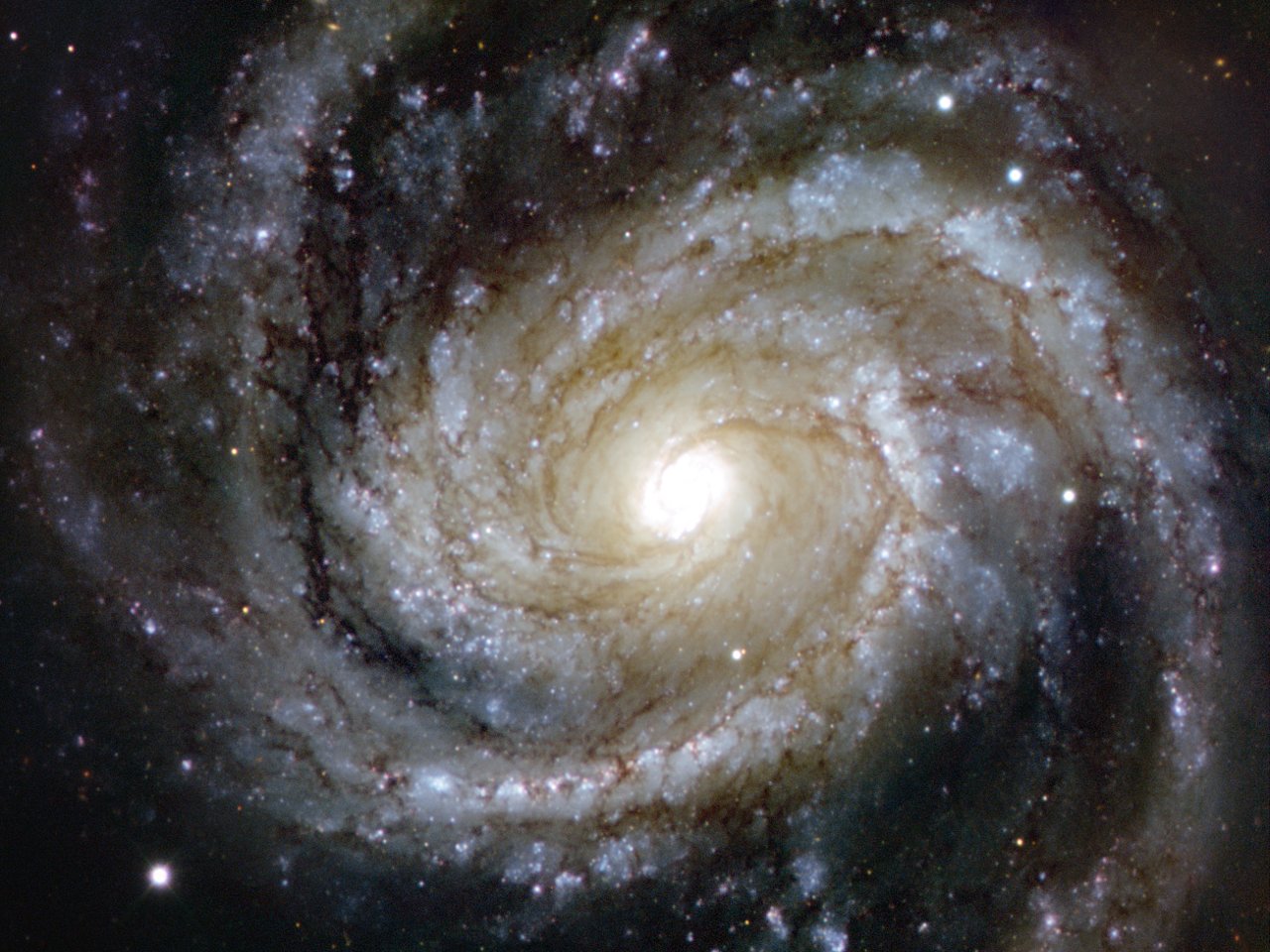VictorBorun wrote: ↑Fri Feb 11, 2022 5:50 am
is it just me or is there really a bar in the core?
Yes, it looks like there is a small bar there. IC 342 may be another of these "intermediate" spirals, which are intermediate between barred and non-barred spirals.
IC 342: The Hidden Galaxy in Camelopardalis
Image Credit & Copyright: Daniel Feller
Wikipedia wrote about IC 342:
IC 342 (also known as Caldwell 5) is
an intermediate spiral galaxy in the constellation Camelopardalis
It is interesting to compare IC 342 with another intermediate spiral galaxy, NGC 1566.
Wikipedia wrote about NGC 1566:
NGC 1566, sometimes known as the Spanish Dancer, is
an intermediate spiral galaxy in the constellation Dorado...
The morphological classification of NGC 1566 is SAB(rs)bc, which indicates a spiral galaxy with a weak bar structure around the nucleus (SAB), an incomplete ring around the bar (rs), and showing moderate to loosely wound arms (bc). The spiral arms are strong and symmetrical...
The mass ratio of neutral hydrogen gas to the mass of the stars is 0.29, which is on the high side for a galaxy of this mass. Absolute luminosity is 3.7×1010 L
☉, and is calculated to contain 1.4×1010 M
☉ of H I...
NGC 1566 is an active galaxy with many features of a Seyfert type 1, although the exact type remains uncertain. It is one of the closest and brightest Seyfert galaxies. The mass of the supermassive black hole at the center is estimated at (1.3±0.6)×107 M
☉.
It's interesting to compare the appearance of these two galaxies. NGC 1566
looks a lot more massive to me. The elegant, symmetrical grand design (two-armed) spiral shape with inner arms studded with pink emission nebulas makes it look "dynamic" and "powerful", whatever I mean by that! ¯\_(ツ)_/¯
NGC 1566
might be brighter than the Milky Way. According to Wikipedia, the absolute luminosity of NGC 1566 is 3.7×1010 L
☉, whereas the absolute luminosity of the Milky Way
might be described as
www.astro.utu.fi The total luminosity of the disk is about 1.2 x 10
10 L
☉ while the luminosity of the spheroid is about 2 x 10
9 L
☉
But that's an old source, so we should be skeptical. My impression is that astronomers have tended to upgrade the size, mass and luminosity of the Milky Way in recent years. However, it does appear as if the central black hole of NGC 1566 is more massive than Sgr A* in the Milky Way.
What I'm really getting at is this -
IC 342 looks relatively small to me. Not
very small, and it is probably larger than M33, the Triangulum galaxy. But it doesn't look very massive to me, because it is a bit too disorganized, with no (very) strong forces apparently pulling at it.
But it actually looks more impressive in infrared light! Here you can also see the bar very clearly.
That's just my two cents!
Ann
 IC 342: The Hidden Galaxy in Camelopardalis
IC 342: The Hidden Galaxy in Camelopardalis










